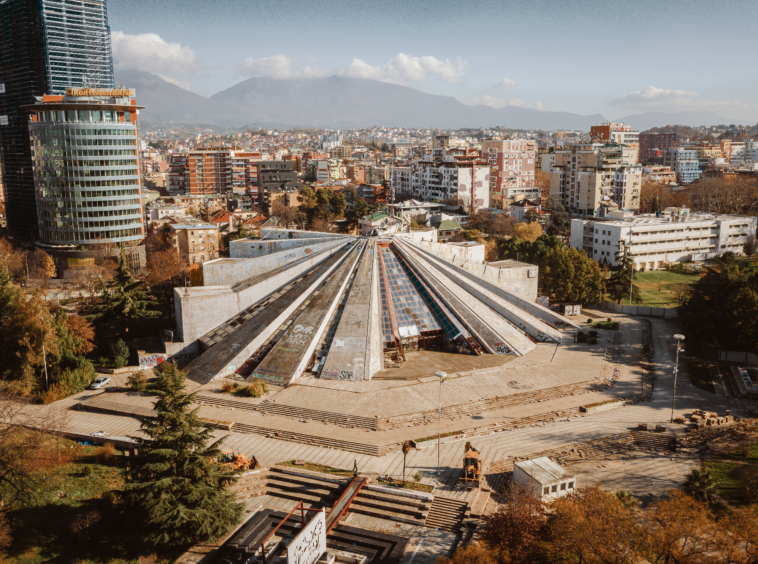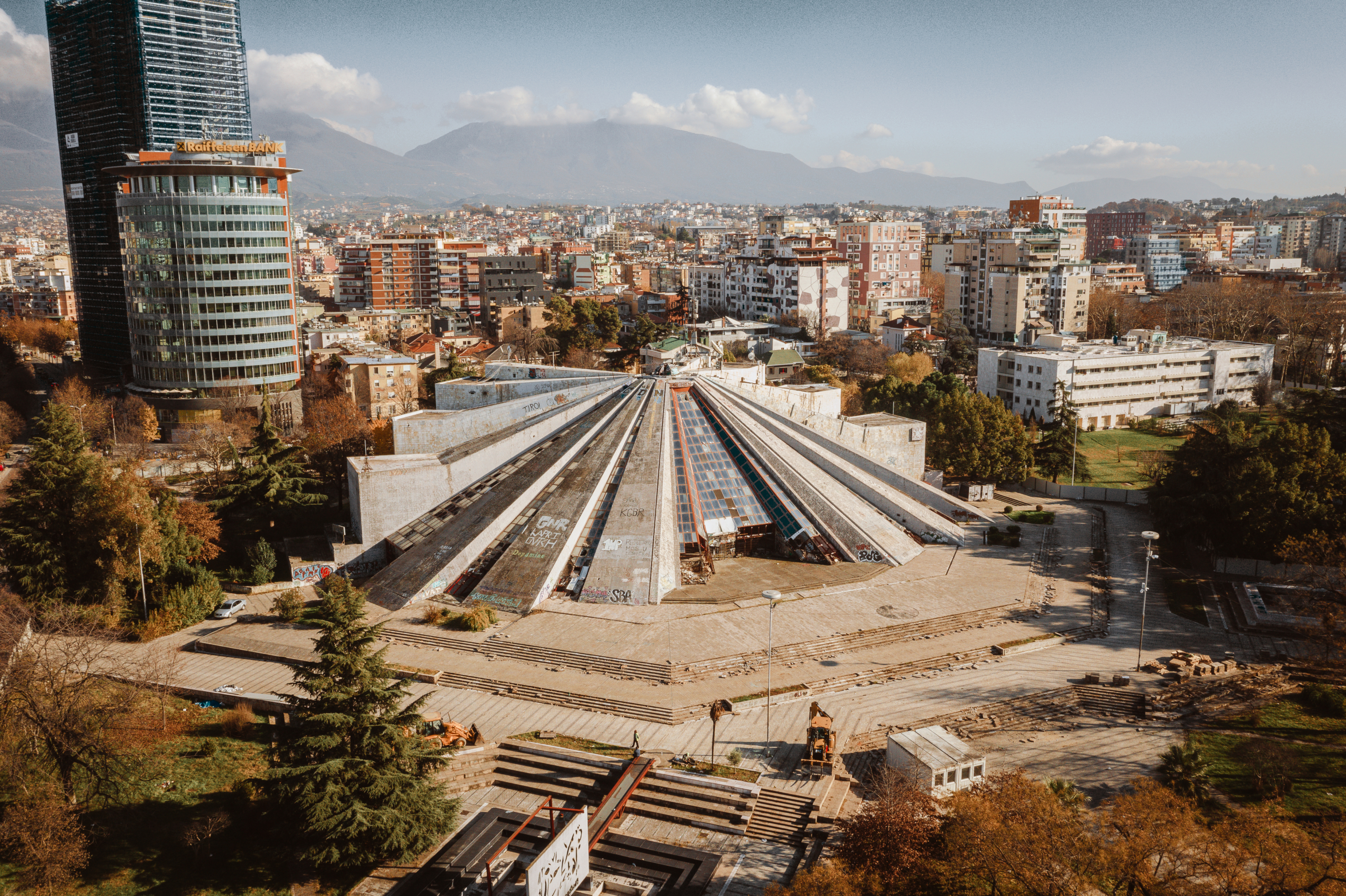The Pyramid of Tirana
Details
Updated on December 30, 2024 at 7:54 amInformation
- Author: Klement Kolaneci, Pranvera Hoxha, Pirro Vaso, and Vladimir Bregu
- Year Built: 1988
Description
The Pyramid of Tirana
The Pyramid of Tirana is one of the most iconic and debated structures in Albania’s capital, symbolizing a complex blend of history, cultural identity, and evolving modernity. This building stands as both a remnant of the past and a beacon for the future, eliciting contrasting opinions. For some, it is the most beautiful building on the “Martyrs of the Nation” Boulevard, while others consider it the ugliest.
A Multifaceted History
Originally constructed as a museum dedicated to Enver Hoxha, the long-time leader of communist Albania, the pyramid has undergone numerous transformations since its completion. Over the years, it has served various functions, including as a cultural center, a television studio, a NATO center during the Kosovo War, a café-club, and a theater. Today, the structure is being reimagined as a hub for modern technologies, reflecting Tirana’s shift toward innovation and contemporary relevance.
Architectural Design
The Pyramid was designed by architects Klement Kolaneci, Pranvera Hoxha, Pirro Vaso, and Vladimir Bregu, and completed in 1988. Its unique form is a striking example of deconstructivist architecture in Albania. From above, the building’s layout resembles an eagle, a symbol deeply tied to Albanian national identity. The front façade, with its dramatic pyramidal shape, dominates the surrounding area, while its vertical and sloping walls defy traditional architectural norms.
Interior Features
The interior was conceived as an amphitheater, with superimposed galleries and zenithal lighting that creates a dramatic and dynamic atmosphere. The use of white marble enhances the sense of elegance and openness, while also serving as a nod to classical architectural materials. The design cleverly merges monumentalism with functionality, allowing the space to adapt to its many uses over the decades.
Cultural and Urban Significance
Situated along the boulevard and surrounded by greenery, the pyramid remains a prominent feature of Tirana’s urban landscape. Its presence sparks dialogue about Albania’s past and future, embodying the nation’s journey through its socialist era, post-communist transition, and aspirations for modernization.
While opinions about the building vary widely, its enduring influence on the architectural and cultural identity of Tirana is undeniable. It stands as a testament to the creativity of its authors and their ability to push the boundaries of conventional design, ensuring that the Pyramid of Tirana remains an important work of the city’s architectural legacy.







